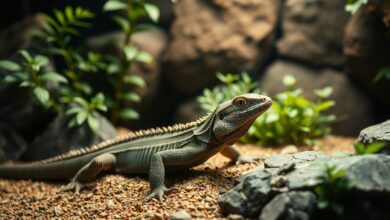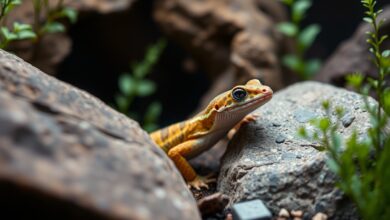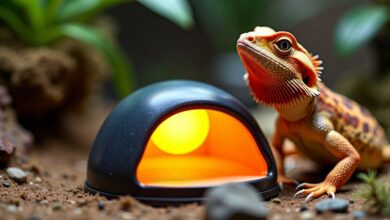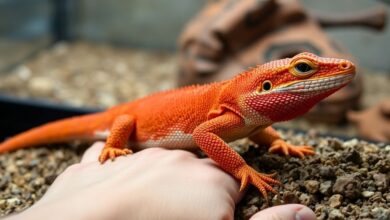Ghost Corn Snake – Tips for Beginners and Experts
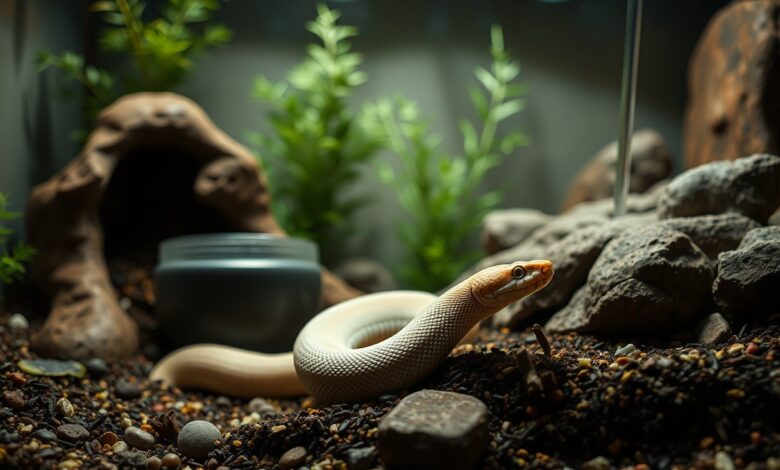
There’s a fascinating world waiting for you with the Ghost Corn Snake, a beloved pet known for its striking appearance and delightful temperament. In this comprehensive care guide, you will discover vital tips that cater to both beginners and experienced keepers, ensuring that your scaled companion remains happy and healthy. From setting up the perfect habitat to understanding their unique dietary needs, you’ll gain vital knowledge that highlights the potential challenges and rewards of owning a Ghost Corn Snake. Elevate your care routine and enjoy a thriving relationship with your serpent!


Key Takeaways:
- Habitat Requirements: Ensure a suitable environment with proper temperature, humidity, and space for your Ghost Corn Snake to thrive.
- Feeding Guidelines: Provide a balanced diet consisting of appropriately sized rodents, and establish a regular feeding schedule to maintain health.
- Handling Tips: Introduce handling gradually to promote tameness and reduce stress, fostering a positive relationship with your snake.
Types of Ghost Corn Snakes
Your journey into the fascinating world of ghost corn snakes begins with understanding the various types available. These captivating snakes come in notable varieties, each with unique features. Here are the main types:
| Classic Ghost | A traditional mix of gray and orange hues. |
| Hypo Ghost | Offers reduced pigmentation for a lighter appearance. |
| Amelanistic Ghost | Characteristics include the absence of black pigment. |
| Charcoal Ghost | Features darker gray and black patterns. |
| Texas Ghost | Known for their unique geographical traits. |
Thou can explore more about these varieties by checking out The Corn Snake Guide.
Morphs and Color Variations
For those passionate about aesthetics, the morphs and color variations of ghost corn snakes can be quite mesmerizing. These snakes can exhibit a range of colors, such as pastel shades, vibrant oranges, and muted grays, depending on the morph. Each morph also has its distinctive patterns, making them truly unique in appearance.
Size and Growth Patterns
Clearly, understanding the size and growth patterns of ghost corn snakes is important for prospective owners. These snakes typically reach lengths of 4 to 5 feet, with growth spurts observed during their first two years. Proper care and diet significantly influence their growth rate.
Types of ghost corn snakes exhibit diverse growth patterns, often influenced by factors like genetics and environmental conditions. The initial size can greatly affect their overall health, and maintaining an appropriate habitat is vital. Choosing a suitable diet with proper nutrition not only affects their growth but also ensures they become healthy companions for years to come.
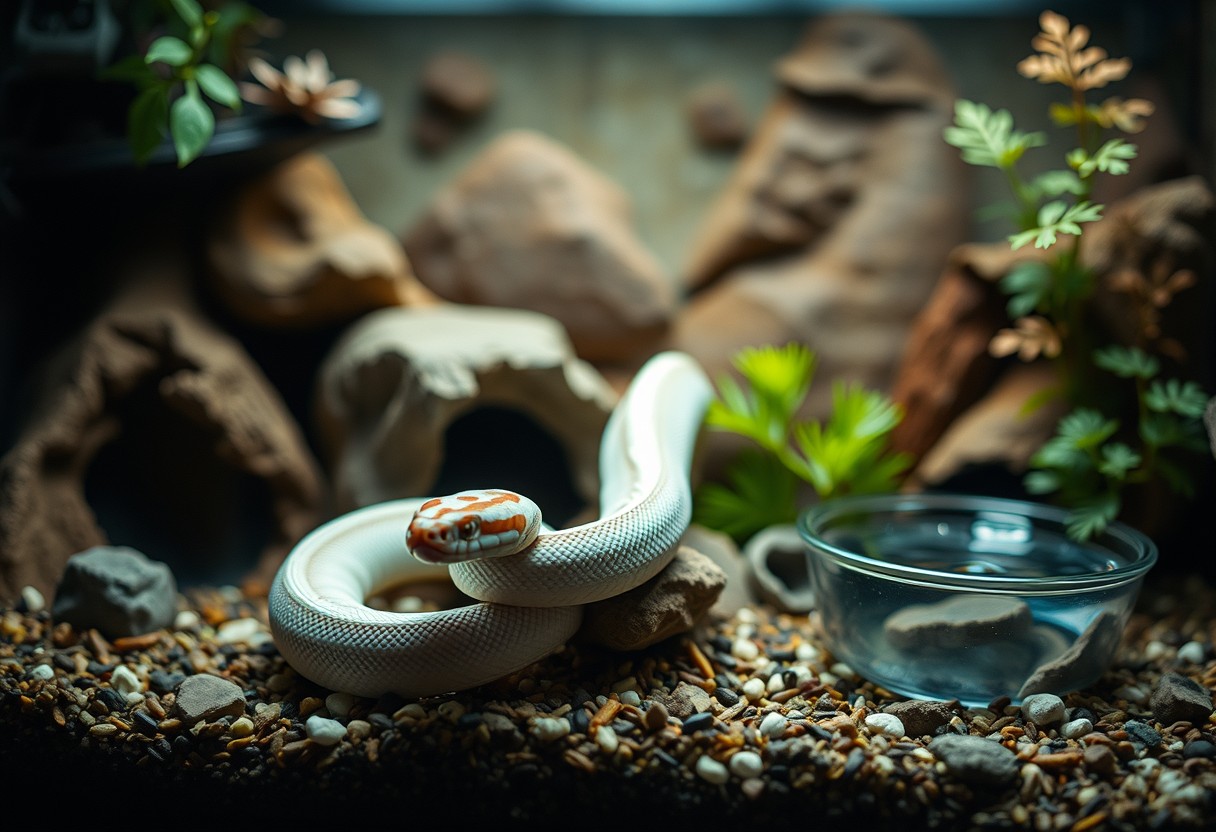
Essential Care Tips
If you want your Ghost Corn Snake to thrive, follow these necessary care tips:
- Maintain appropriate temperatures
- Provide adequate humidity
- Ensure proper habitat size
- Handle with care
- Monitor health regularly
The key to a healthy snake is prioritizing its environment and well-being.
Habitat Setup
While setting up your Ghost Corn Snake’s habitat, ensure it has enough space to move and explore. Aim for a terrarium with a minimum of 20 gallons, equipped with a secure lid, hiding spots, and heating elements. Use substrates like aspen shavings or coconut fiber for easy cleanup and optimal humidity. A water dish should be included for hydration and soaking.
Feeding Guidelines
Tips for feeding your Ghost Corn Snake involve age-appropriate prey. Generally, feeding should occur every 5-7 days for hatchlings and every 10-14 days for adults. Start with appropriate-sized rodents that are no larger than the snake’s mid-body width.
To ensure your Ghost Corn Snake stays healthy, offer a varied diet of properly sized prey such as pinkies, fuzzies, and adult mice, depending on its age. Your snake’s feeding schedule should be adapted to its size, with hatchlings receiving meals more frequently while adults have more extended intervals. Watch for signs of regurgitation or weight loss, which may indicate feeding issues. Always provide fresh water alongside meals, as hydration is vital for your snake’s well-being.
Step-by-Step Care Routine
Keep your Ghost Corn Snake healthy by following a consistent care routine. Establishing a structured schedule not only provides a comfortable environment but also aids in monitoring your snake’s health closely. Below is a simplified care routine to guide you:
| Daily Tasks | Monthly Tasks |
|---|---|
| Check temperature and humidity levels. | Thoroughly clean the enclosure. |
| Inspect for signs of illness or shedding issues. | Replace substrate as needed. |
| Ensure fresh water is available. | Examine and maintain heating elements. |
| Feed as per your schedule. | Check for any wear or damage in the habitat. |
Daily Maintenance
Step-by-step, begin every day by ensuring the temperature and humidity levels are within the ideal range for your Ghost Corn Snake. This attention to environmental conditions greatly influences their well-being. Be on the lookout for any signs of illness or abnormal behavior, such as lack of appetite or unusual shedding. Always provide fresh water, and follow your specific feeding schedule to maintain optimal health.
Monthly Care Checklist
Clearly, your monthly care checklist should involve more in-depth maintenance of your snake’s habitat. This includes a thorough cleaning of the enclosure, including all decor and heat sources, to prevent any buildup of waste or bacteria.
Daily, you will want to inspect your Ghost Corn Snake’s habitat to ensure cleanliness and safety. For monthly tasks, allocate time to deep clean the habitat by removing all substrate, disinfecting surfaces, and ensuring that the environment is safe and sanitary. Regularly checking for wear and tear on heating elements is also important to avoid accidents. A clean home not only elevates your pet’s health but also your peace of mind.
Factors to Consider for Optimal Health
Now, achieving optimal health for your Ghost Corn Snake involves several imperative factors. Focus on maintaining a proper environment by addressing the following key elements:
- Temperature
- Humidity
- Lighting
- Diet
- Space
This holistic approach ensures that your snake thrives in its habitat.
Temperature and Humidity
An ideal habitat for your Ghost Corn Snake requires specific temperature and humidity levels to ensure their well-being. Use the table below for quick reference:
| Requirement | Optimal Level |
|---|---|
| Temperature Gradient | 75°F – 85°F (24°C – 29°C) |
| Humidity Level | 40% – 60% |
Lighting Requirements
Now, providing the right lighting is imperative for your Ghost Corn Snake’s health. Aim for a daylight cycle of 12 hours, utilizing a heat lamp or UVB bulb to mimic natural sunlight. This not only helps in temperature regulation but also promotes good metabolism. Avoid direct exposure to harmful fluorescent lights that can stress your snake and lead to health issues.
Understanding the importance of lighting helps create a balanced environment for your Ghost Corn Snake. Proper lighting contributes to a healthy circadian rhythm, allowing your snake to regulate its natural behaviors, such as feeding and shedding. Inadequate lighting can lead to detrimental health effects, including weakened bones and a compromised immune system. Prioritize providing the right spectrum and intensity to ensure a thriving habitat.
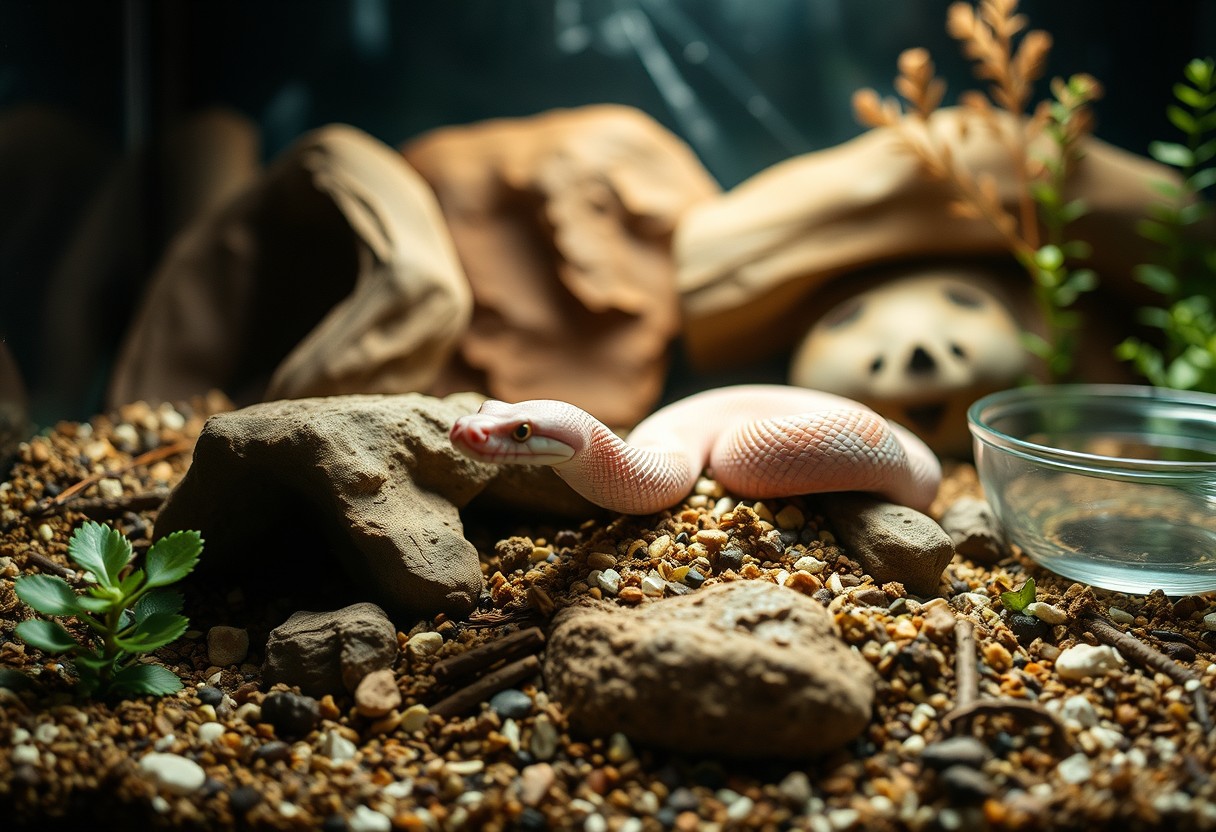
Pros and Cons of Keeping Ghost Corn Snakes
Unlike many reptiles, Ghost Corn Snakes have unique traits that can appeal to both new and experienced keepers. It’s important to weigh their benefits and drawbacks before deciding to welcome one into your home.
Pros and Cons
| Pros | Cons |
|---|---|
| Calm temperament | Potential for stress during handling |
| Color variations are striking | May require specialized habitat conditions |
| Relatively easy to care for | Possible feeding challenges for picky eaters |
| Long lifespan | Initial setup costs can be high |
| Low maintenance requirements | Can be escape artists |
Advantages of Ownership
Any beginner can appreciate the ease of care involved with Ghost Corn Snakes, as they are usually resilient and adaptable. Their docile nature makes them great pets for all ages, allowing for enjoyable and safe interactions.
Potential Challenges
Any new snake owner should be aware that keeping a Ghost Corn Snake does come with challenges. These include ensuring they have the right temperature and humidity in their habitat, which is important for your snake’s health.
Ownership of a Ghost Corn Snake requires an understanding of its specific habitat needs to prevent stress and health issues. Additionally, you may face challenges if your snake is a picky eater, which can lead to feeding difficulties. Keeping an eye on escape routes is also necessary since these snakes are known to be escape artists. A well-planned setup and proper care are vital to ensure a positive environment for your new pet.
Expert Advice for Advanced Care
Not every keeper knows that maintaining a Ghost Corn Snake requires specialized care. Follow these guidelines to ensure a thriving environment for your snake:
| Expert Tips | Description |
|---|---|
| 1. Maintain Humidity | Ensure humidity levels are between 40-60% for optimal shedding. |
| 2. Optimal Heat Gradients | Provide a temperature gradient of 75-85°F for basking and cooler zones. |
| 3. Enrichment | Incorporate climbing branches and hiding spots to promote natural behavior. |
| 4. Regular Handling | Frequent, gentle handling helps tame your snake and builds trust. |
Breeding Considerations
Considerations for breeding Ghost Corn Snakes involve preparing your snake for successful reproduction. You should ensure that both the male and female are mature, typically around two years of age. Additionally, providing a suitable nesting area, along with maintaining proper temperature and humidity, can significantly enhance mating success.
Health Monitoring
An effective health monitoring routine is key to the wellbeing of your Ghost Corn Snake. You should regularly assess your snake’s body condition, check for signs of respiratory infections, and observe their feeding habits closely.
Advice for health monitoring includes keeping an eye on your snake’s appetite and shedding patterns. If your Ghost Corn shows a decline in appetite, lethargy, or any unusual behavior, consult a veterinarian familiar with reptiles. Early detection of any health issues is vital, as neglect can lead to serious complications. Additionally, maintaining a consistent hygiene routine in the enclosure will help prevent common diseases, ensuring your snake lives a long and healthy life.
Conclusion
Conclusively, whether you are a beginner or an expert, taking care of your Ghost Corn Snake requires attention to detail in their habitat, diet, and health. By following the guidelines outlined in this care guide, you can create a thriving environment for your snake. For a comprehensive overview, you can refer to the Corn Snake Care Sheet. Your dedication to their needs will ensure a happy and healthy pet.
Q: What is the ideal habitat setup for a Ghost Corn Snake?
A: The ideal habitat for a Ghost Corn Snake includes a secure enclosure that provides enough space for the snake to move around comfortably. A 20-gallon tank is suitable for younger snakes, while adults may require a 40-gallon tank or larger. Use a substrate like aspen shavings or a coconut fiber that allows for burrowing. The enclosure should have a temperature gradient, with a basking area heated to 85-90°F (29-32°C) and a cooler side between 75-80°F (24-27°C). Include hiding spots such as logs and caves, and provide a shallow water dish for hydration and soaking.
Q: How often should I feed my Ghost Corn Snake?
A: Feeding frequency varies with the age and size of your Ghost Corn Snake. Hatchlings and juveniles should be fed smaller mice every 5 to 7 days, while adult snakes can be fed larger mice or rats every 7 to 14 days. It’s important to ensure the prey size is appropriate, generally about the same width as the widest part of the snake. Monitor your snake’s weight and adjust feeding frequency and portion sizes as needed to maintain a healthy body condition.
Q: What are the signs of health issues in a Ghost Corn Snake?
A: Common signs of health issues in Ghost Corn Snakes can include lethargy, refusal to eat, abnormal shedding (such as retained skin), and changes in bowel movements. Respiratory issues may manifest as wheezing or open-mouthed breathing. Any unusual behavior or appearance, such as swelling or lesions, can also indicate poor health. If you observe any of these symptoms, it is advisable to consult a veterinarian experienced with reptiles for a proper diagnosis and treatment.


